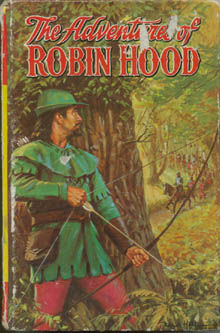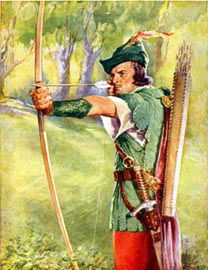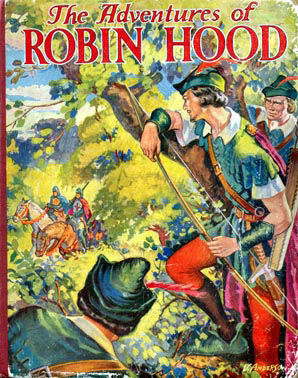Summary of the Book
The story begins with a brief overview of the Norman conquest and post-conquest politics. Sir Robert de Braisse-Neuve also called "Robert the Wolf" or "le Loup" controls most of Sherwood Forest from his mighty fortress in Normanton. He plans to align with Prince John and seize control of England during King Richard's absence. However, the thane Alfred of Sherwood does not support him. So, the Wolf -- aided by fellow Norman bad guys, Sir Stephen de Froy, Sir Geoffrey Malpert and the sheriff of Nottingham, Master Ronald Hamnett -- attacks Alfred's castle at Newstead and kills the thane. Alfred's daughter Marian is kidnapped and is promised in marriage to Sir Stephen de Froy. Meanwhile, Alfred's son Robin (yes, Marian's brother in this telling) and faithful members of the household flee to the greenwood.
As Robin Hood, the late thane's son begins his outlaw life. He rescues the captured Little John, prevents Marian's wedding to Sir Stephen and instead she is married to Allen-a-Dale (who from this tale hails from Barnesdale, hence the Dale part of his name). Little John goes to Nottingham and enters the sheriff's service. In the guise of potters, Robin and his men rob the sheriff's household and then trick the sheriff into a forest ambush. They also capture the Bishop of Hereford, but then protect the bishop from the cutpurse and cutthroat Guy of Gisborne.
Then King Richard returns disguised as the Black Knight. The king helps the outlaws retake the remains of Newstead castle, which were being held by Sir Stephen. And then Robin becomes the king's lieutenant as the king prepares to lay seige to the mighty fortress of Normanton. The Wolf is defeated and killed. But although Robin has won pardon for him and his men, he hears the call of the greenwood and does not give up his forest ways.



Contact Us